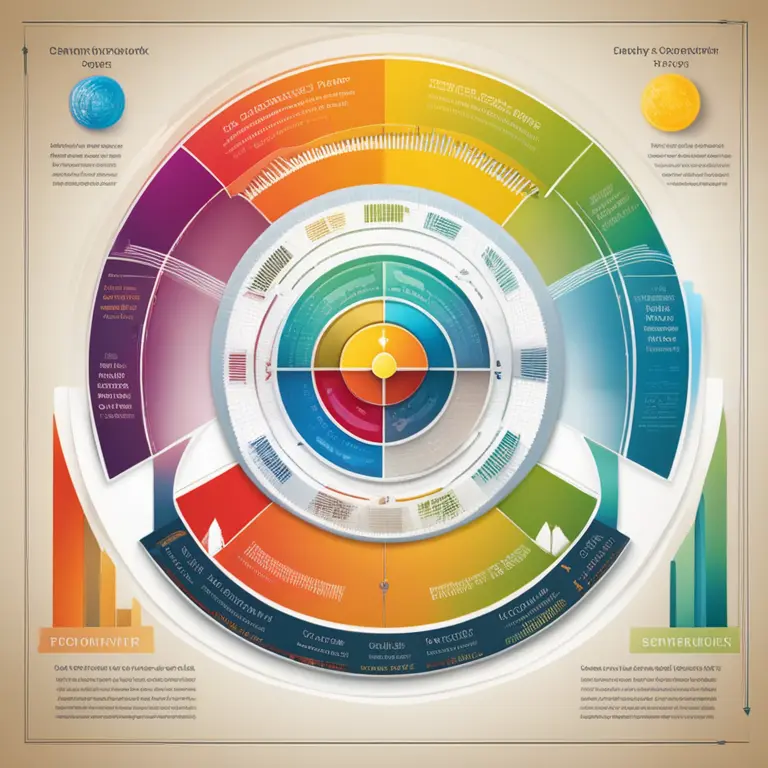
The Meaning of Low Biorhythms
Discover the implications of low biorhythm cycles on physical, emotional, and intellectual well-being to enhance life management.
article by Adrian Wallace
The Basis of Biorhythms
Biorhythms are a complex yet intriguing concept believed to affect human life by predicting the cycles of physical, emotional, and intellectual states. Stemming from a pseudoscientific notion, biorhythms assert that our daily lives are influenced by rhythmic biological cycles. Although science has yet to confirm the validity of these rhythms, many people find value in monitoring their biorhythmic patterns to anticipate periods of high productivity or potential challenges. The theory places emphasis on three primary cycles: the 23-day physical, the 28-day emotional, and the 33-day intellectual rhythms which, when calculated from your birth date, are said to guide your daily performance.

Understanding Low Biorhythms
Low biorhythms occur when one or more of your biorhythm cycles are in a negative phase. This phase is characterized by a downward curve that falls below the neutral baseline, indicating a period where individuals may feel less energized, more prone to mistakes or emotional instability. A low physical biorhythm can denote a time when your body might not be at peak performance, potentially affecting stamina and coordination. During a low emotional biorhythm, one might experience mood swings or a feeling of emotional disconnect. Intellectual biorhythms, when low, could lead to difficulties in processing information or making decisions. Recognizing these troughs can be crucial for personal development and scheduling important activities.

Life Management During Low Biorhythms
Managing your life during low biorhythms involves adjusting expectations and taking preemptive measures to cope with reduced capabilities. Practitioners of biorhythm theory often suggest scheduling less demanding tasks during these low cycles or taking on activities that require less precision. It is also considered a time for introspection rather than action, allowing you to reflect on your emotions and thoughts without making any significant life changes. As the theory goes, being mindful of your biorhythms can contribute to a more balanced lifestyle and improved self-awareness.

Navigating Emotional Slumps
Emotional lows can be particularly challenging, as they often affect interpersonal relationships and mental well-being. To navigate these periods, it's advisable to engage in activities that promote relaxation and mental health, such as meditation, yoga, or spending time with loved ones. Acknowledging that this is a temporary state and not an accurate reflection of your everyday emotional landscape can also be comforting. Communication with peers and family about one's current biorhythmic state can help foster understanding and support.

Optimizing Performance with Low Intellectual Rhythms
Intellectual troughs can pose significant challenges in one's work or academic life. During such times, it may help to focus on routine tasks or rely more heavily on prior planning and structure. Those who track their biorhythms might choose these periods to engage in activities that require less critical thinking and instead, perform tasks that are more methodical or habitual. Being patient with oneself and not taking on too much can safeguard against mental burnout.
Physical Considerations and Care
When the physical biorhythm cycle is low, it could be an ideal time to rest and recuperate. Engaging in gentle exercise, ensuring adequate sleep, and maintaining a nutritious diet are strategies recommended for these times. Refraining from high-risk activities or rigorous exercise routines can also minimize the potential for accidents or physical strain. Listening to your body and giving it the care it needs can facilitate a smoother ride through these low biorhythm periods.
Incorporating Technology
In our tech-driven world, various applications and online tools have emerged to assist individuals in tracking their biorhythm cycles. By entering your date of birth, these digital platforms provide personalized charts detailing your physical, emotional, and intellectual biorhythms. Predictive analytics, a growing field in 2024 and beyond, might soon offer even more refined insights into biorhythmic patterns, perhaps integrating them with wearable technology to provide real-time adaptive guidance that can help manage daily life more effectively through the understanding of personal rhythms.
Published: 1/25/2024
Modified: 1/25/2024
More predictions
Come back here soon to learn more about yourself and your future


The Basis of Biorhythms: An Insight into Biological Cycles
Delve into the concept of biorhythms, the belief in rhythmic biological processes that purportedly influence human physiology and behavior.


The Rhythms Within: Biorhythm Horoscope Insights
Tap into the cosmic wisdom of biorhythms to understand your emotional, physical, and intellectual cycles for enhanced well-being and foresight.


The Biorhythm Debate: Effective Insight or Myth?
Discover the realities behind biorhythms, how they're calculated, and their impact on daily life. Can these biological cycles truly predict our physical, emotional, and intellectual states?